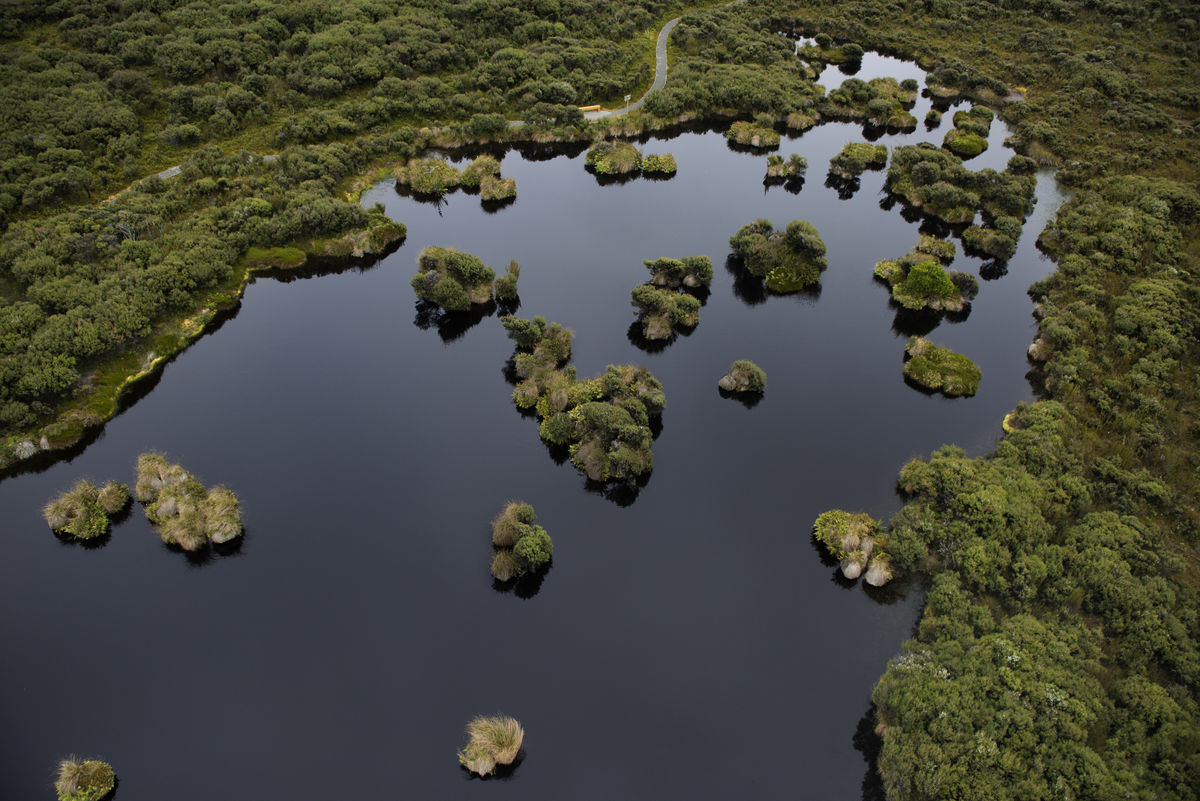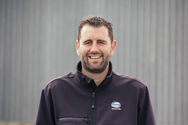
Large scale constructed wetland trial
What is the problem?
Waituna Lagoon sits at the bottom of a 20,000-hectare catchment of which 70% has been converted from wetlands and native bush to agriculture. Ongoing water quality monitoring shows the lagoon and its tributaries are under stress and are at risk of shifting from a clear-water aquatic plant-dominated state to a turbid, algal-dominated state. Waituna Lagoon has relatively intact Ruppia beds (a type of aquatic plant) which have been identified as a key species in regulating Lagoon water quality and providing aquatic habitat. Ruppia grows densely it stops the bed being stirred up, uses up nutrients like nitrogen and phosphorus, creates oxygen and provides habitat for native fish and invertebrates. Ruppia is sensitive to water levels, salty conditions during spring germination, nutrients and water clarity.
Waituna Lagoon is intermittently opened to the sea to allow for drainage and prevent flooding on surrounding farmland, facilitate fish migration and provide for the flushing of contaminants. There is no way to mechanically close the Lagoon once it is opened. The Lagoon gets closed off by natural processes such as the tides moving sand and shingle across the opening. As a result, the lagoon can be open to the sea for months or years, negatively impacting Ruppia cover.
To prevent the Lagoon moving to a turbid, algae-dominated state there has been a focus on reducing contaminant loads (sediment, phosphorus and nitrogen) reaching the Lagoon and preventing the Lagoon being open over the critical Ruppia spring germination period.
What is the project?
As part of the wider Whakamana Te Waituna partnership’s contaminant intervention workstream, Living Water commissioned Aqualinc to look at ways to achieve a 50 % reduction in nutrients entering the lagoon.
The overall objective was to look at a catchment-wide approach to contaminant reduction while increasing resilience of the ecosystems in and around the lagoon and tributaries.
How can a reduction in contaminants entering Waituna Lagoon be achieved?
The report found individual landowners could achieve significant reductions, but the costs of reducing contaminants are high and could impact the viability of farming operations and the community.
The best and most cost-effective results are likely to come from a combination of individual and collective approaches. With nature-based solutions being the focus. The greatest gains are likely to be made with one or two large scale (50-200ha) wetlands, these will need to be supported by small-scale interventions on individual farms, such as fencing, riparian planting, sediment traps, two-stage channels smaller scale interventions like this are included in individual Farm Environment Plans.

Cain Duncan

How viable is the proposed large-scale wetland?
Living Water commissioned modelling that looked at how the surrounding land was affected by lagoon height at 0.5m, 1.0m, 1.5m, 2.0 m and 2.5m. Whakamana te Waituna subsequently purchased 566ha of land that is gradually being retired from pastoral farming to provide a balance between managing lagoon levels for ecological health and land drainage and assisting in reconnecting tangata whenua with Waituna.
A series of wetland sites were investigated within the Waituna Creek Catchment (the largest catchment contributing the most flow to Waituna Lagoon) based on location, ownership and wetland potential. These sites were further refined and a shortlist developed prior to consulting with landowners. Unfortunately, a site within the Waituna Creek Catchment couldn’t be secured and focus subsequently turned to developing a wetland on land already owned by the Whakamana te Waituna partners.
Land owned by the Trust is in the smaller Carran Creek catchment, which contributes significantly less contaminants to the Lagoon. Though a wetland in this catchment will not significantly reduce contaminant loads to the Lagoon, it will provide an opportunity to trial how a lowland wetland within a low gradient, deeply incised waterway environment could be constructed. This environment is typical of many intensive farming areas and the lessons learnt could be applied around New Zealand.
Tonkin and Taylor were commissioned to determine the feasibility and consentability of sites (from a topography, hydrology and consent pathway point of view) owned by Trust partners and a 3ha site to the north of Waituna Lagoon Road was selected as the preferred option. The site, while smaller than initially envisaged, is still significant in a New Zealand constructed wetland context and reflects the overall construction budget for the project and revised objectives centred on trialling construction techniques, plant species, maintenance, and performance efficiency.
A wetland of this scale, specifically designed for nitrogen removal hasn’t been tested in a rural waterway network. The wetland integrates with the Waituna Mahinga kai Pa and Te Rūnanga o Awarua’s vision of establishing water polishing ponds (wetlands) in and around the Mahinga kai Pa site.
The 3ha wetland trial is a major step towards understanding the viability of large scale wetland restoration/creation on the western side of the Waituna Catchment and in lowland areas of New Zealand.

How is the plan being implemented?
A 3ha constructed wetland trial is underway which looks to:
- Re-establish wetlands in the catchment
- Assist in defining a consenting pathway for future projects
- Provide construction experience that can be scaled to larger future projects in other areas
- Provide updated, Southland specific data on wetland performance for contaminant reductions
- Understand what type of plants work best and how these need to be maintained so they continue to provide optimal nutrient uptake
- Provide cultural, biodiversity and recreational benefits
- Provide more accurate costs for future budgeting
- Increase wetland extent within the RAMSAR footprint
- Test the recently released DairyNZ-NIWA constructed wetland guidance
- Enable Southland to be a national leader with the re-establishment of wetlands on a large scale
- Provide critical data for the wetlands taskforce recommended by the Regional Forum as a method for achieving freshwater objectives in Southland.
The Whakamana te Waituna Trust, Tonkin and Taylor and E3 Scientific are working on the design and engineering of the wetland, the resource consent applications and undertaking an ecological assessment of the sections of Carran Creek and associated tributaries that will be diverted through the wetland. The current timeline for lodging resource consent for the project is May 2023 with construction anticipated for early 2024.
What’s the long-term plan for contaminant reduction?
Waituna Creek is the main tributary to the Lagoon, on the western side of the catchment where 90% of the contaminants come from. There are long-term aspirations for the construction of a large-scale, community wetland in the area, built on the learnings from the current Carran Creek wetland trial. Achieving this vision will require additional land, community buy in and funding.
An initial step was the recent purchase of 16.5ha of land in the lower Waituna Creek area.
Two large wetlands in the Waituna Creek catchment combined with on-farm mitigations could reduce nitrogen loadings to Waituna Lagoon by up to 50% and sediment by up to 70%. Combined with the resilience, ecological vales, eco-tourism and biodiversity created by the wetlands, this could be an impressive outcome for the future of farming and freshwater.
